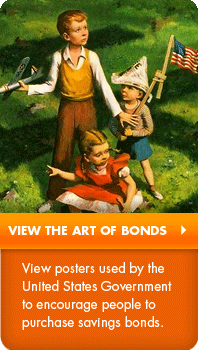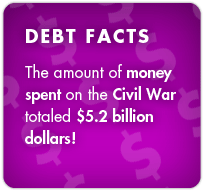
Savings Bonds
Unlike the other types of Treasury securities, savings bonds can be owned by kids. Also, savings bonds are non-marketable, which means they are registered to a specific owner and cannot be bought and sold to other people in the "secondary market" by brokers and dealers. Paper savings bonds used to be bought in different denominations. Bonds were available with a face value of $25, $50, $75, $100, $200, $500, $1000, $5000 and $10,000. You could buy them from most commercial banks in paper form or directly from the Treasury Department in electronic form. Savings bonds that are electronic can be bought for as little as $25 or any amount up to $5000 and held in a secure TreasuryDirect® account.
Since January 1, 2012, paper savings bonds are no longer available at banks or other financial institutions. Paper Series I bonds can still be bought with IRS tax refunds, but Series EE bonds are available only in electronic form.
There are two types of savings bonds currently available.
- Series EE bonds
- will pay a fixed (or set) interest rate
- are available as electronic bonds
- earn interest each month
- are guaranteed to at least double in value in 20 years
- earn interest for 30 years
When you used to buy a paper Series EE bond, you paid half the face value for the bond. Now, you pay the total face value for electronic EE bonds. At the end of the savings bond's term, you cash it in. Regardless if you paid half or total face value, you will get the face value plus the interest that has built up over the years. You can cash in your bond after one year from buying it and get back the money you paid for it. You will not get all the interest that has built up if you cash in a savings bond before it is five years old.
- Series I bonds
- Paper (through IRS tax refunds) and electronic bonds are sold at face value
- can be cashed in after one year from buying it for the amount you paid for it (but you won’t get all the interest that has built up if you cash in a Series I bond before it is five years old)
- earn interest for 30 years
The Series I bond has two interest rates. One is a fixed rate that is set when you buy your bond. The other rate is connected to the inflation rate (a rise in the prices you pay for the things you buy). If there is inflation, the interest rate goes up. If prices are falling, called “deflation,” the interest rate goes down.









